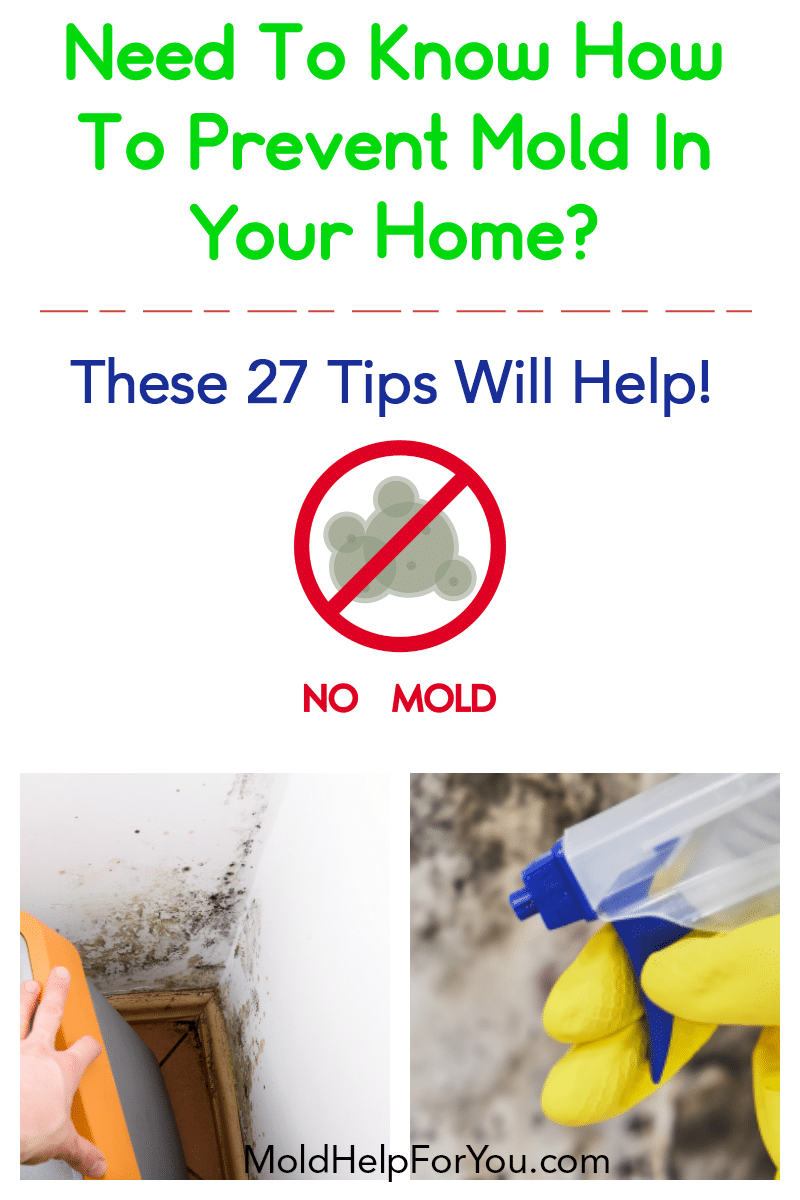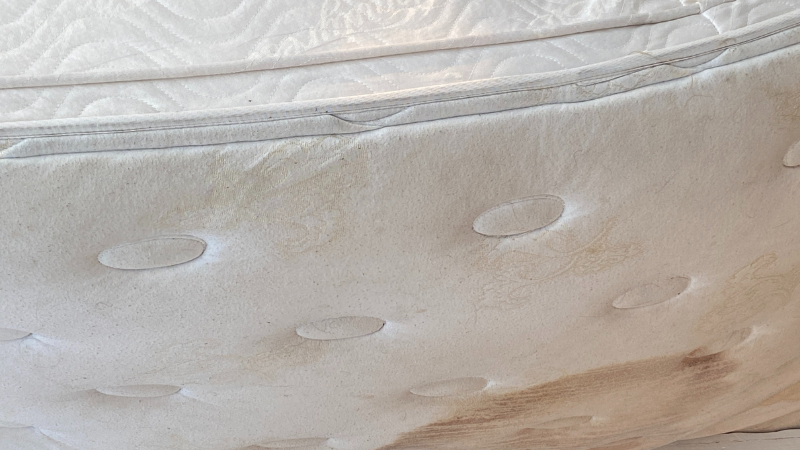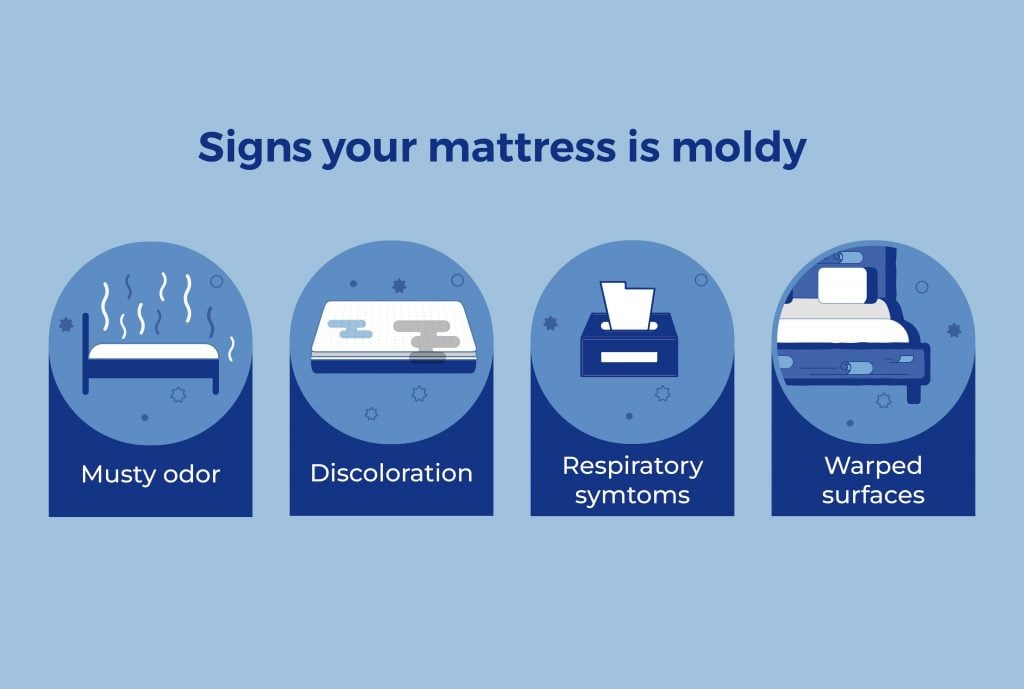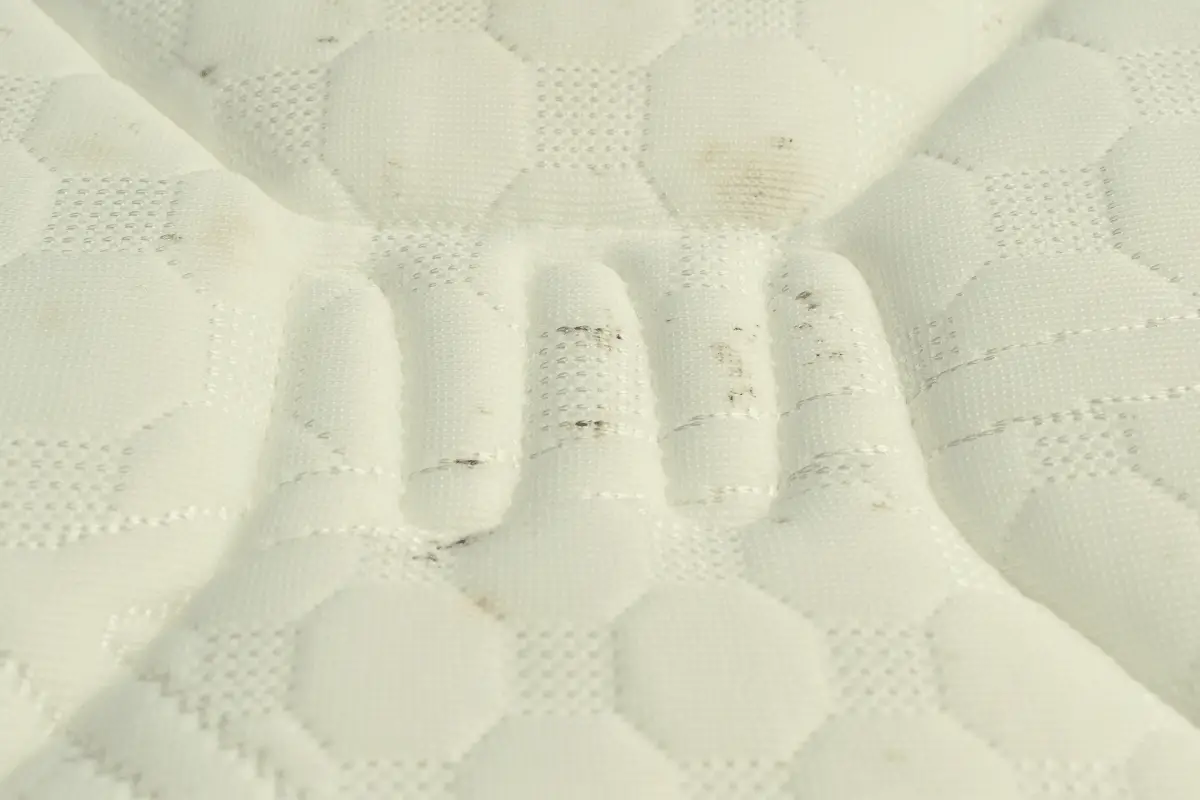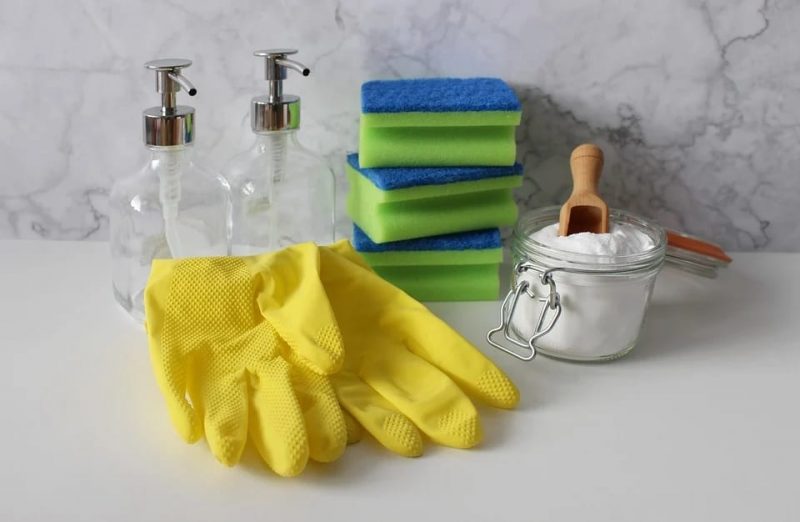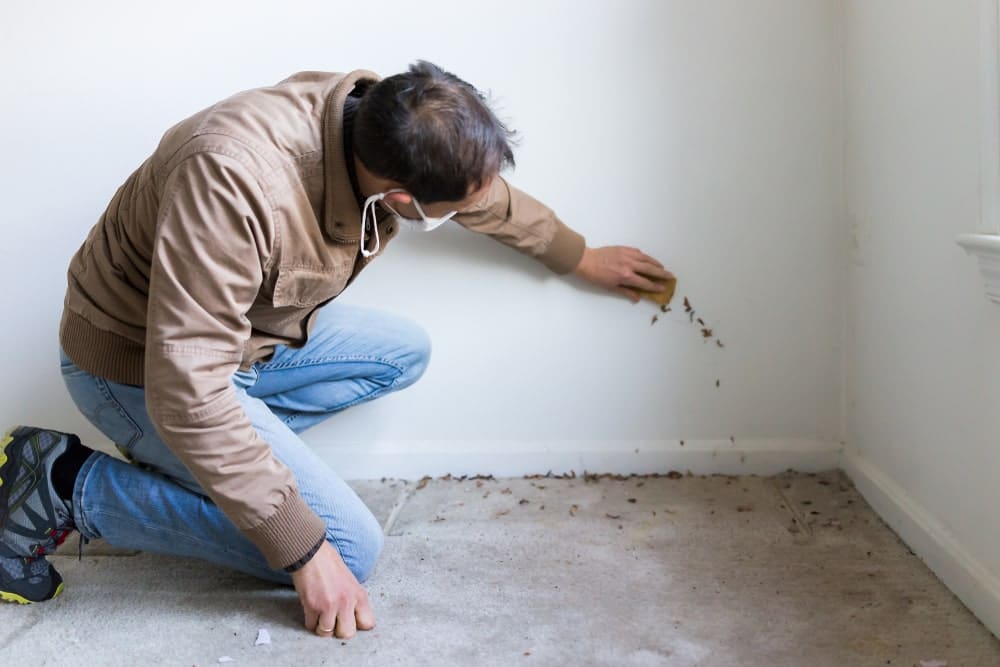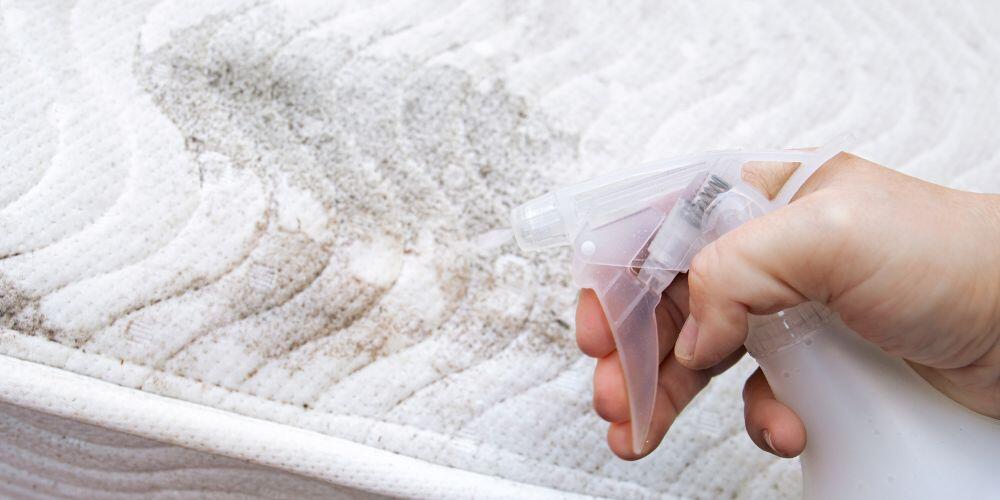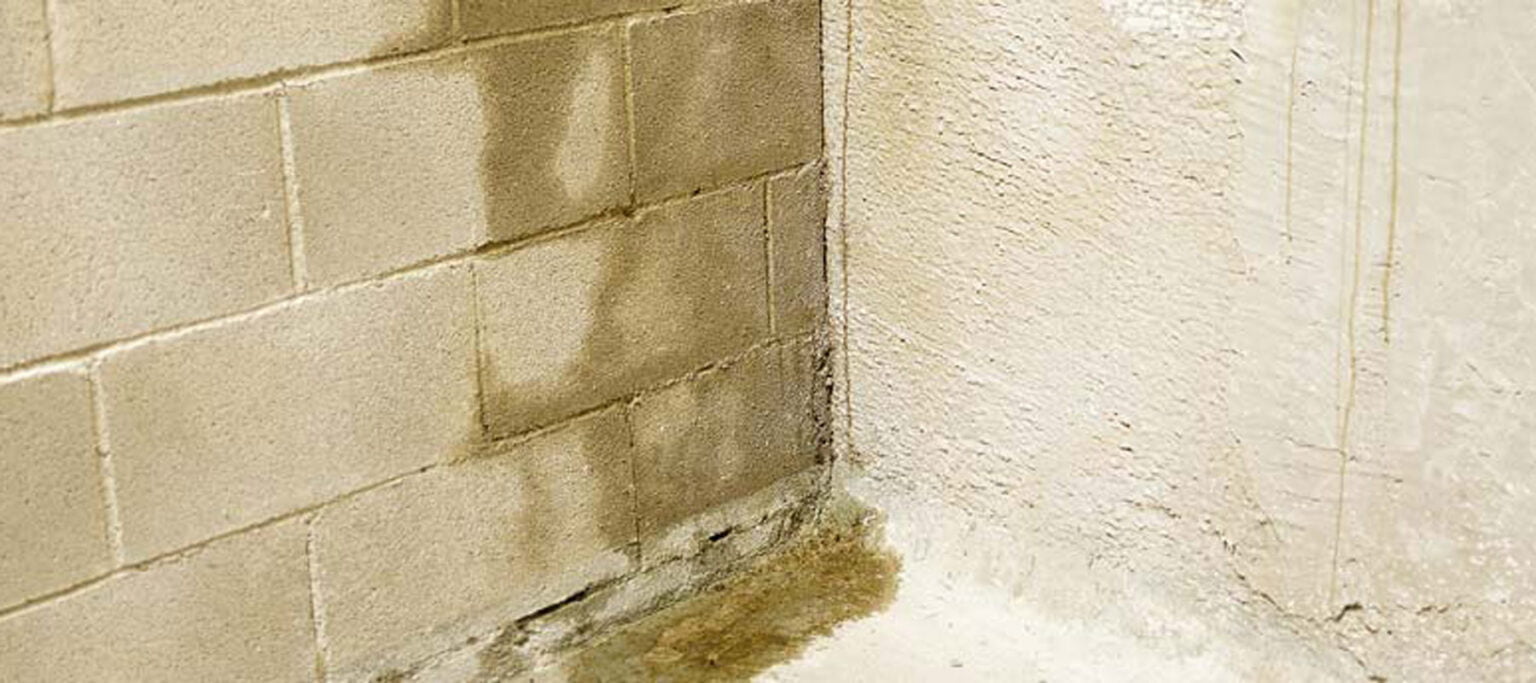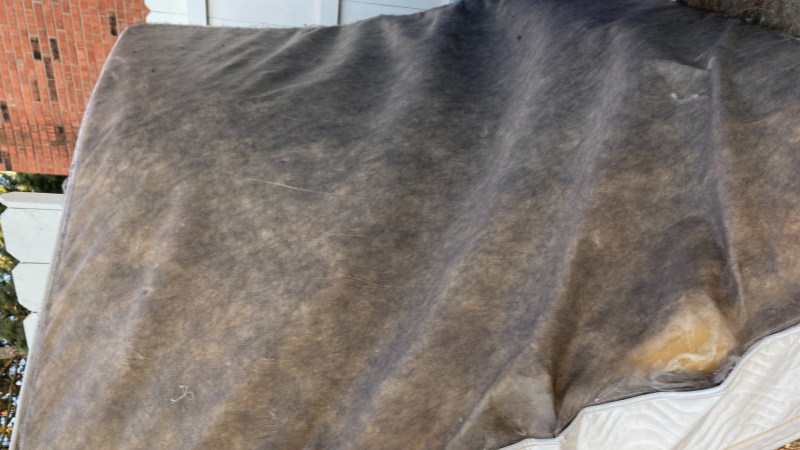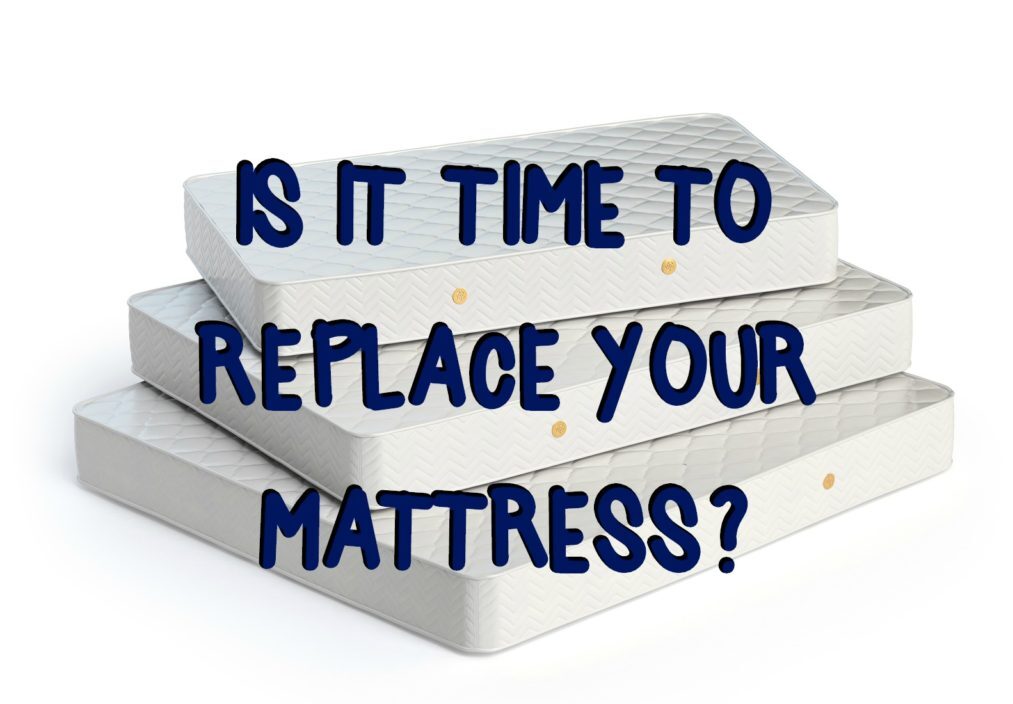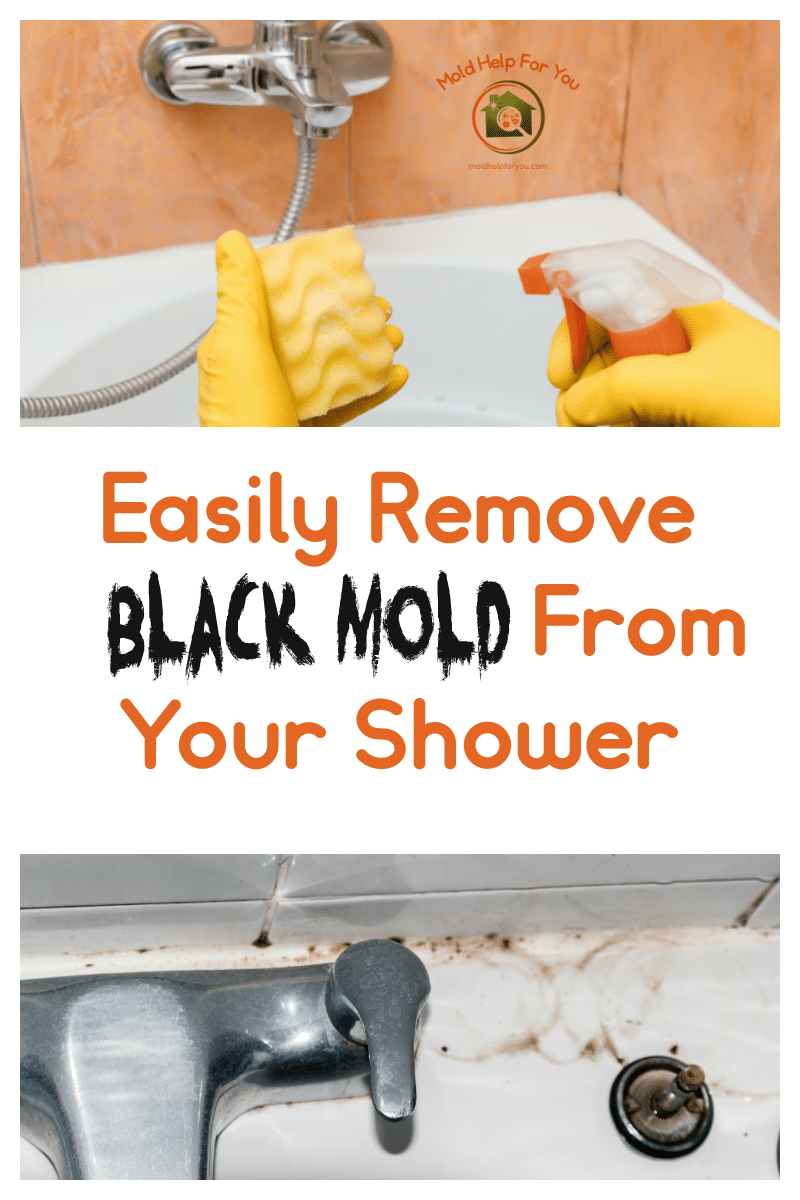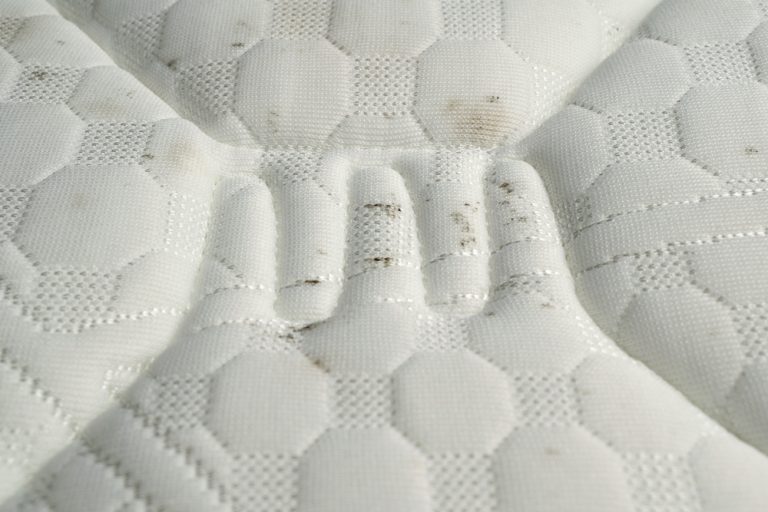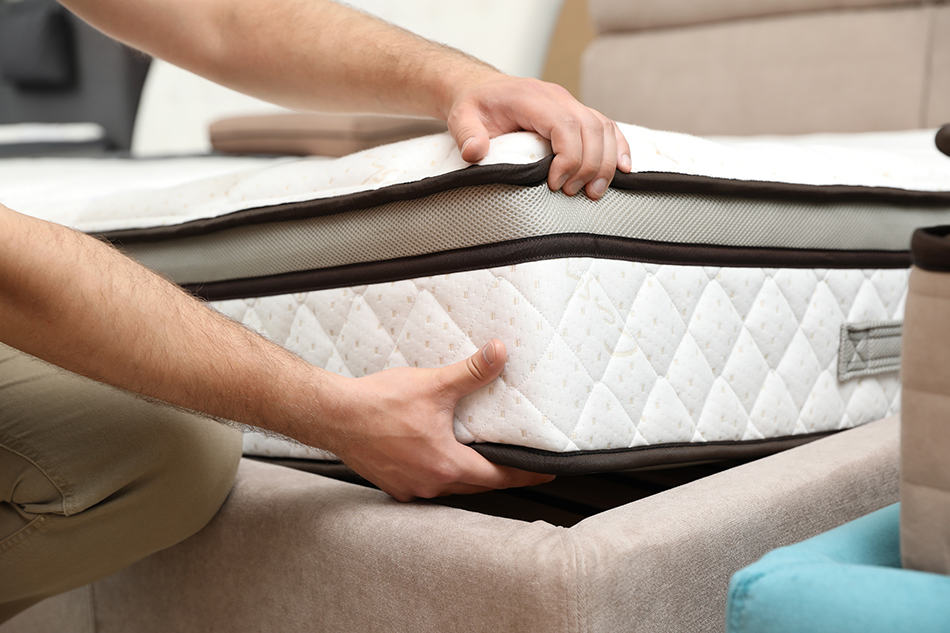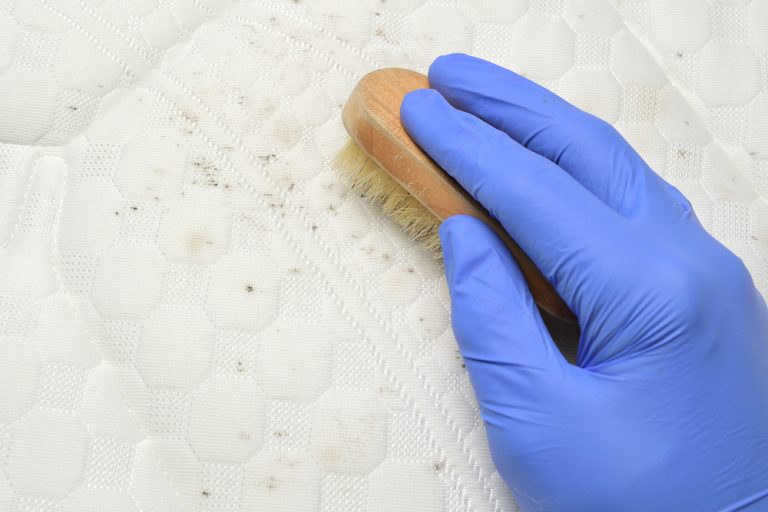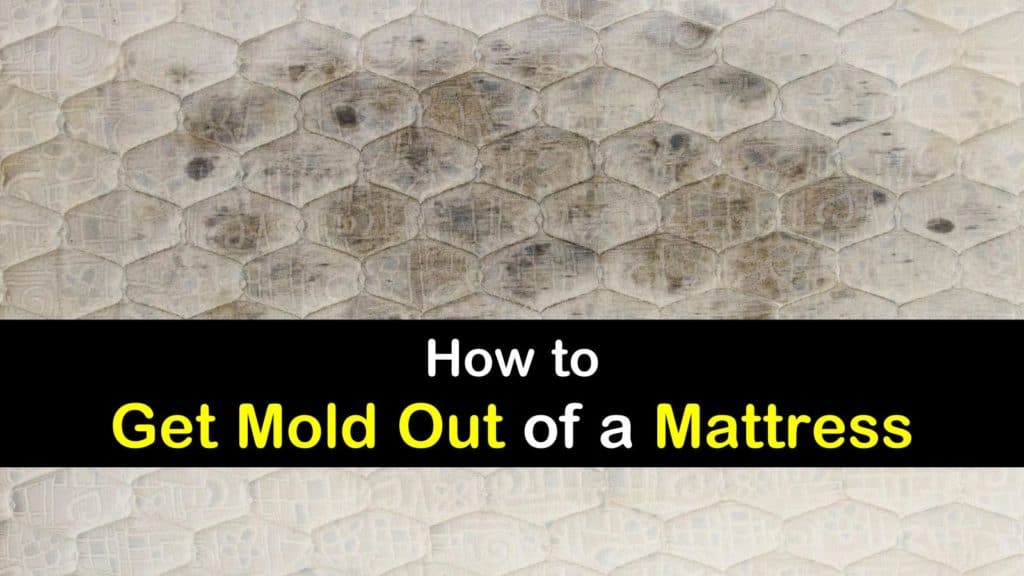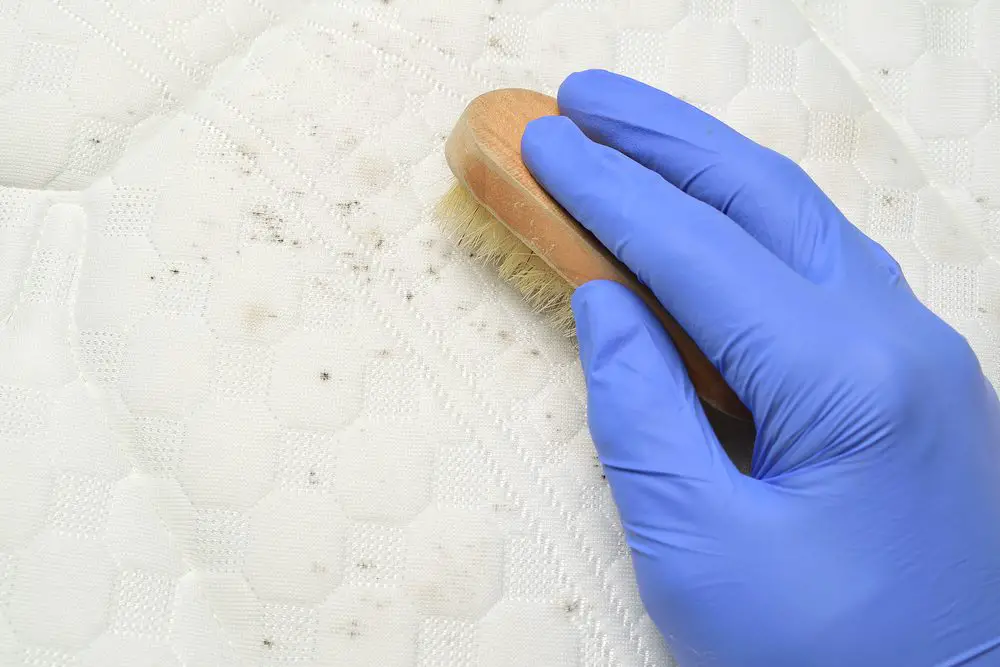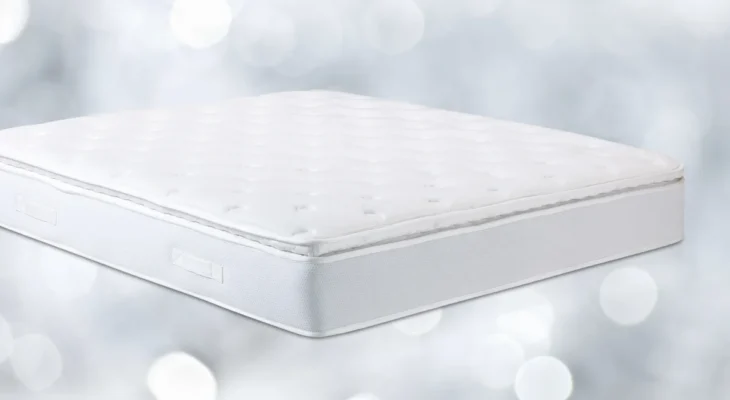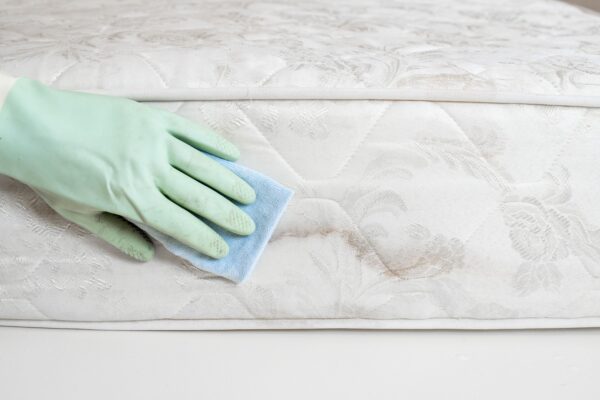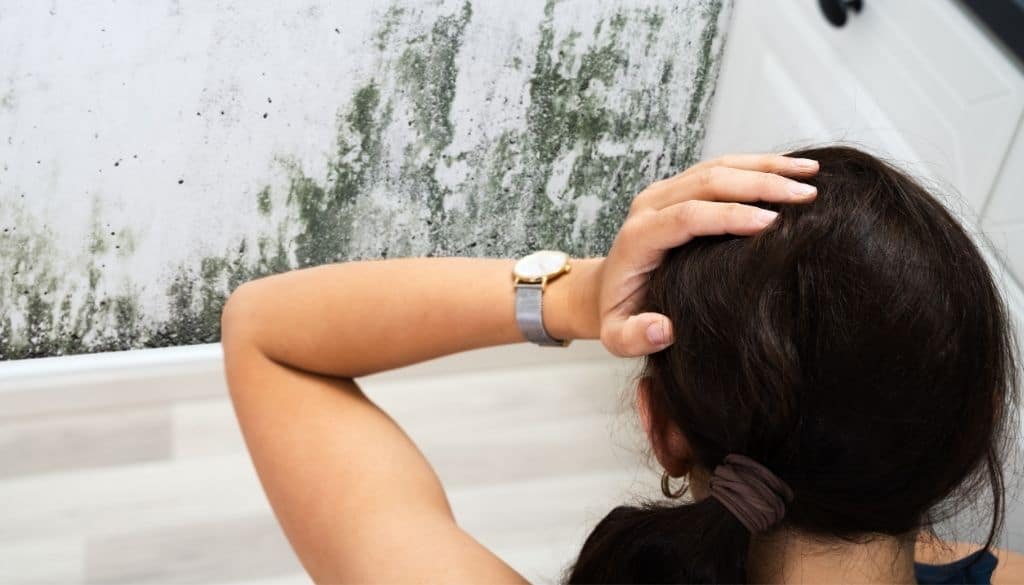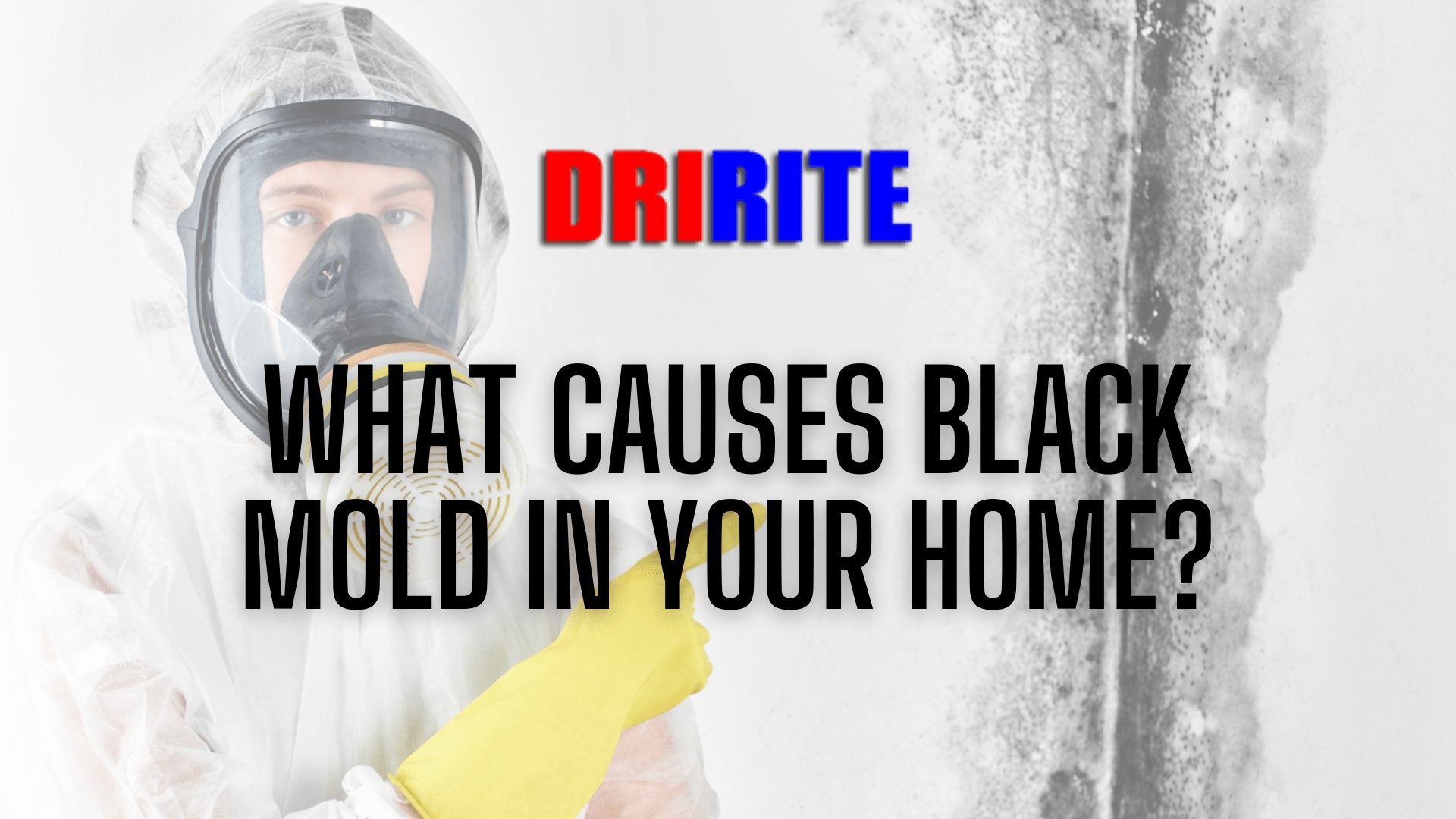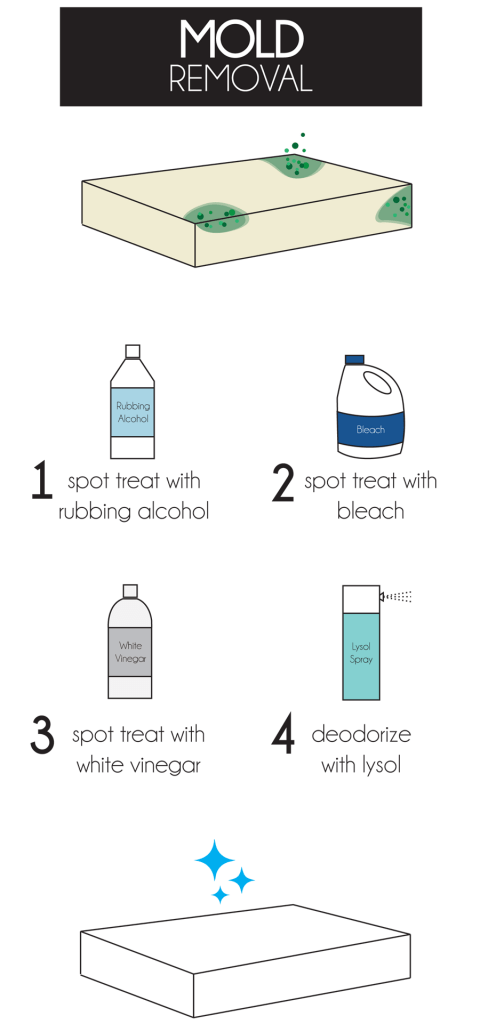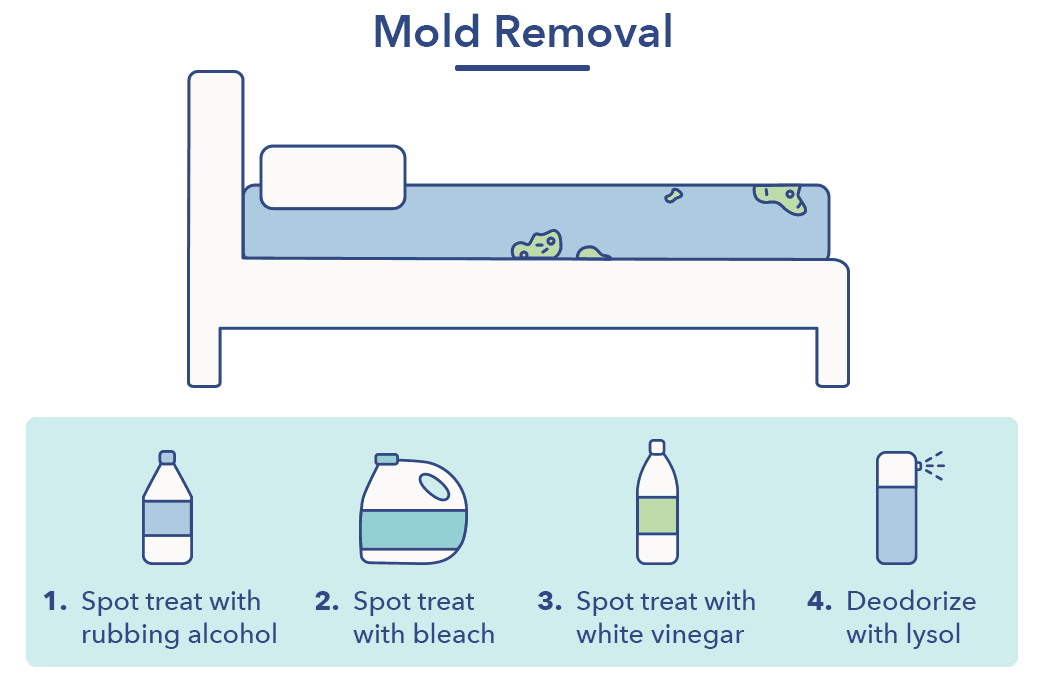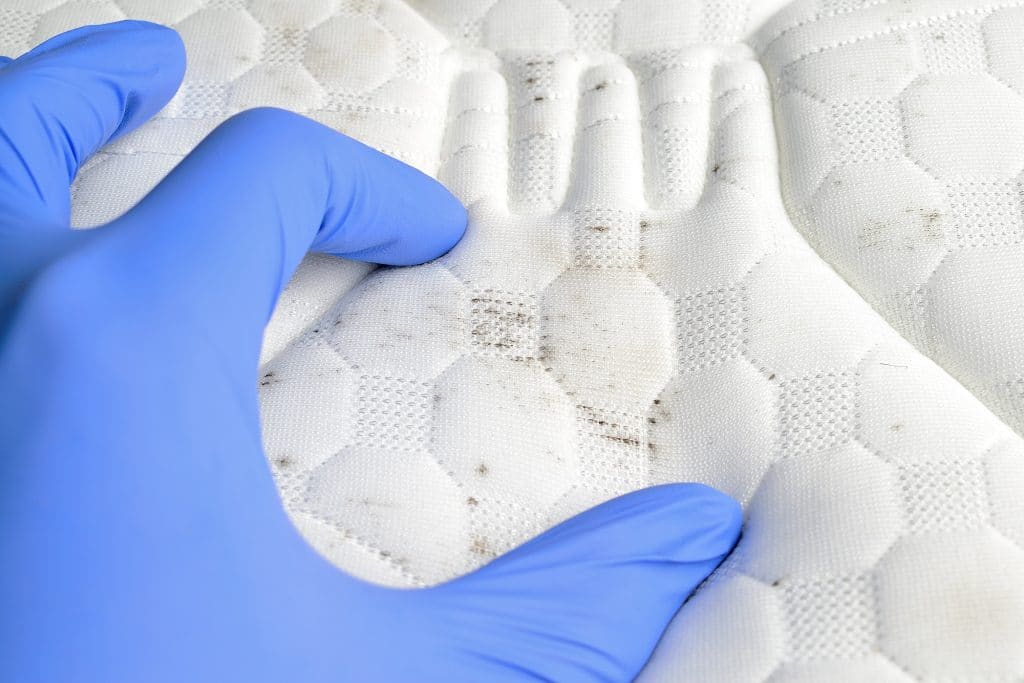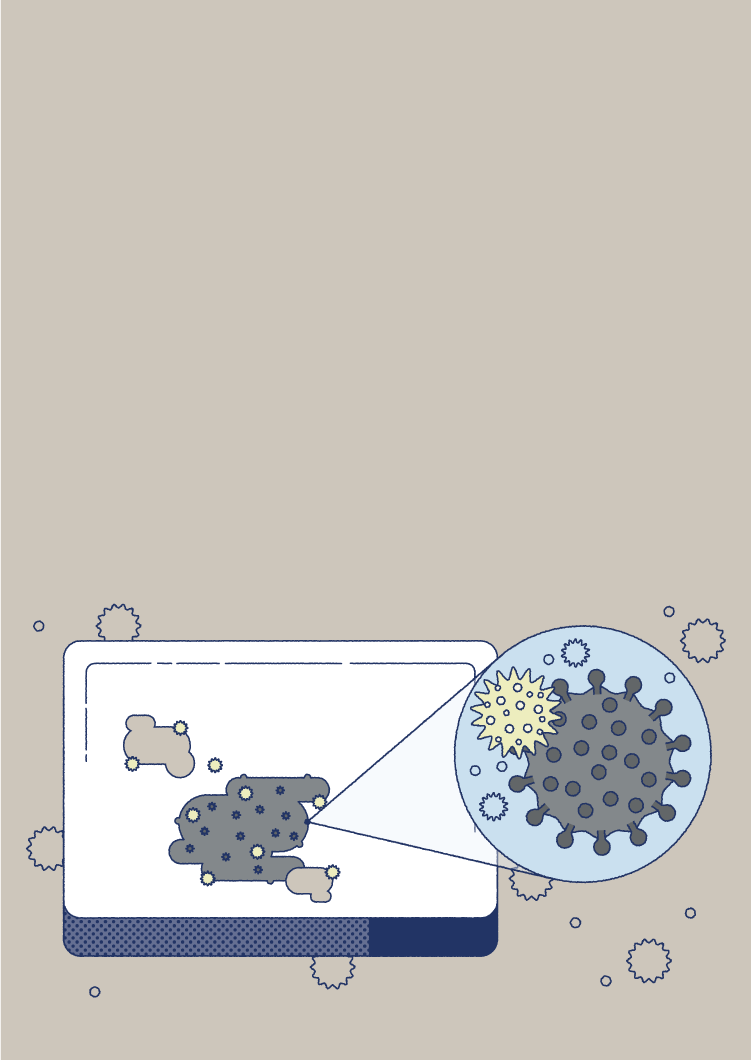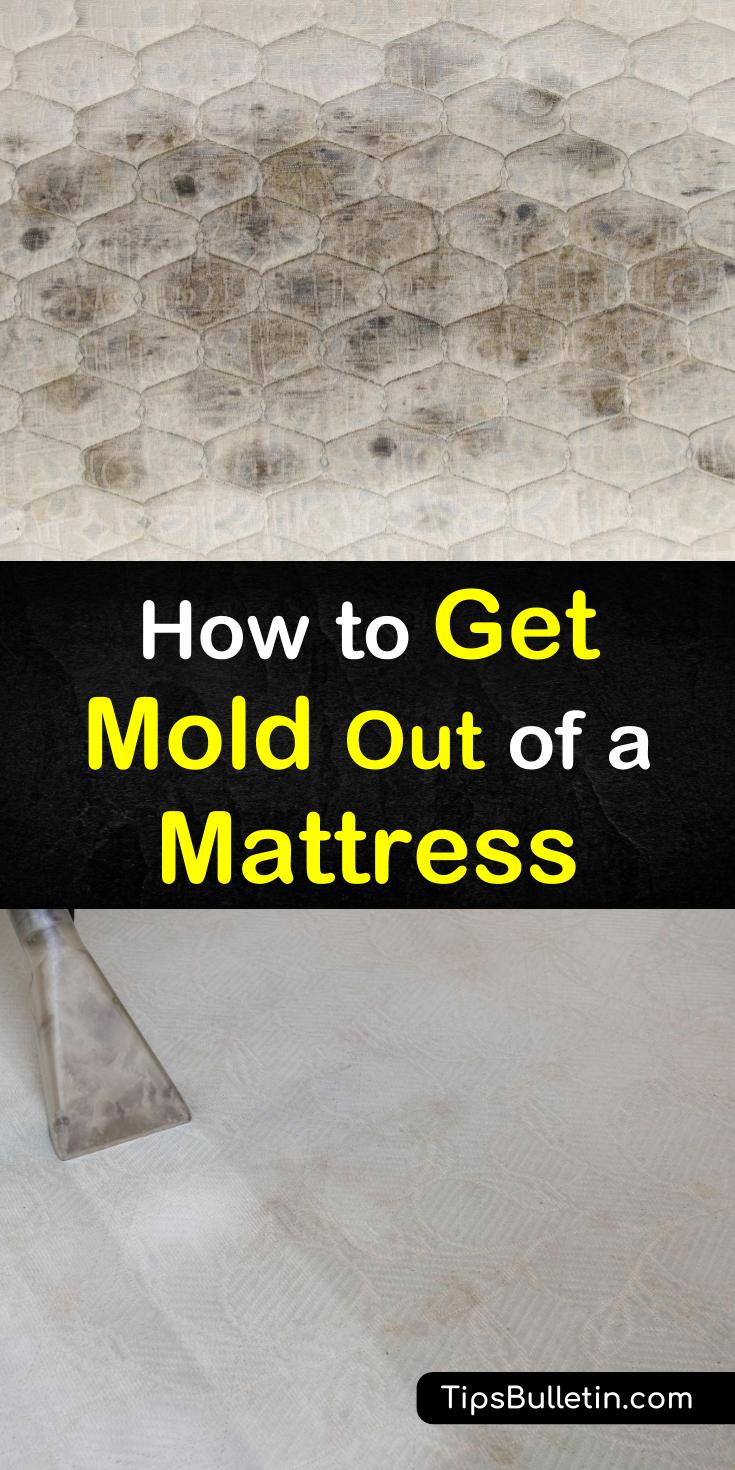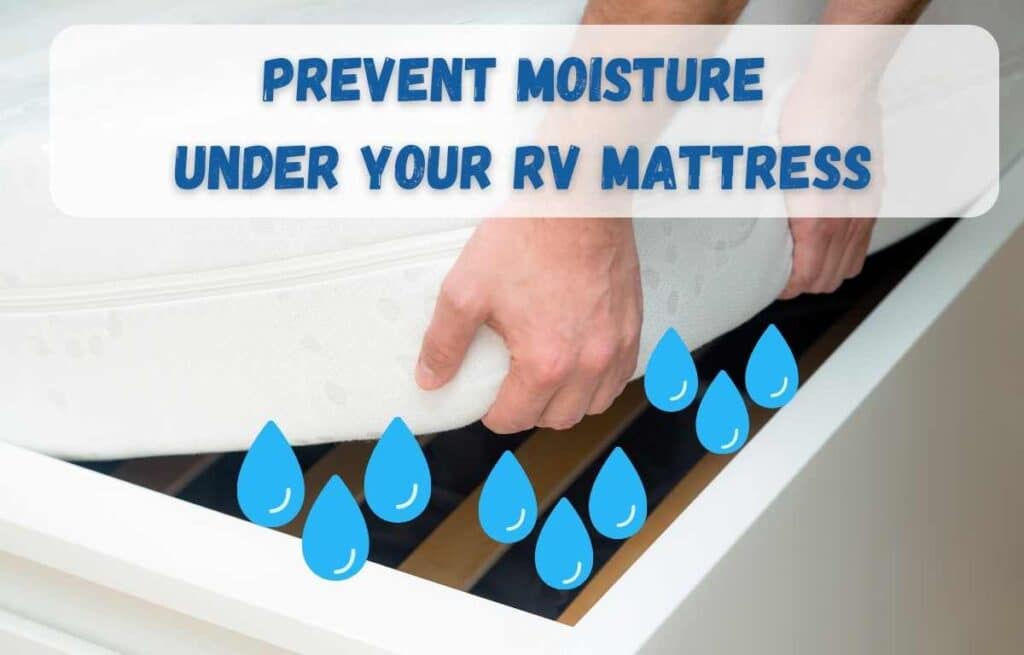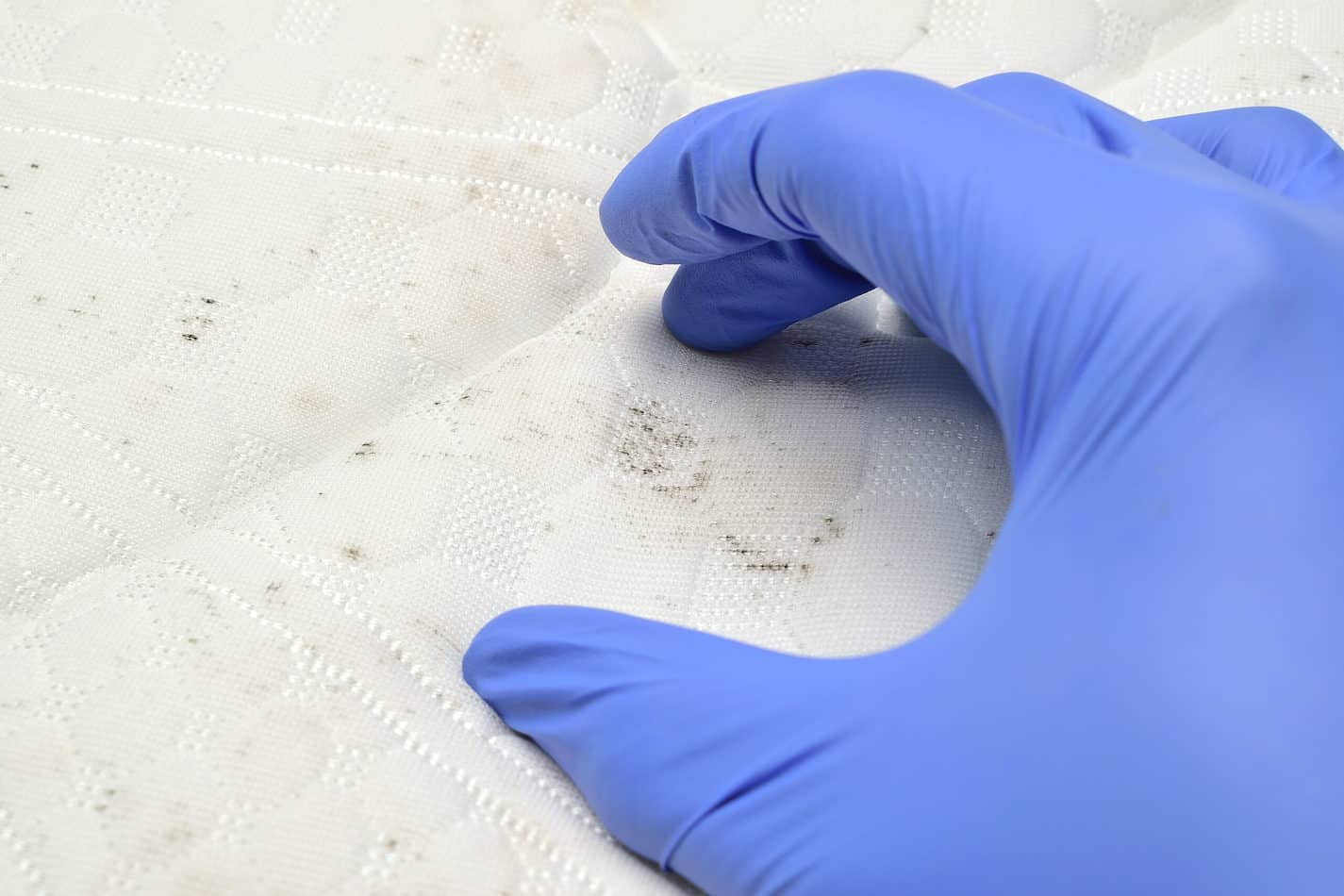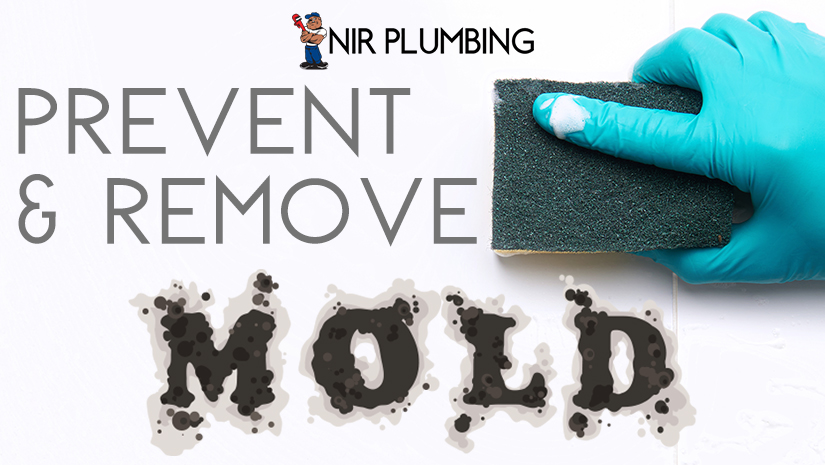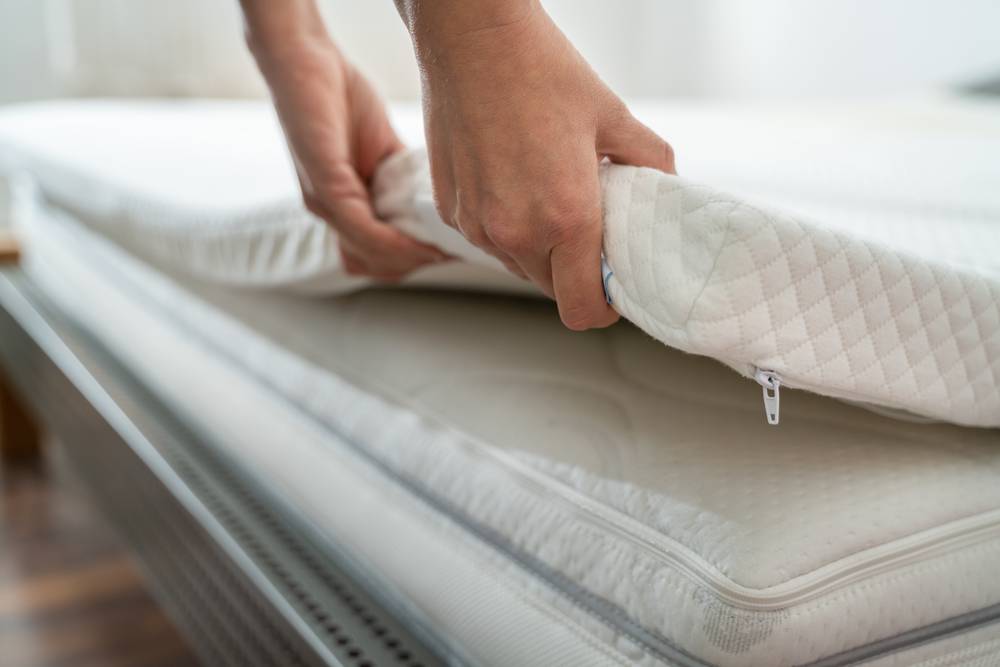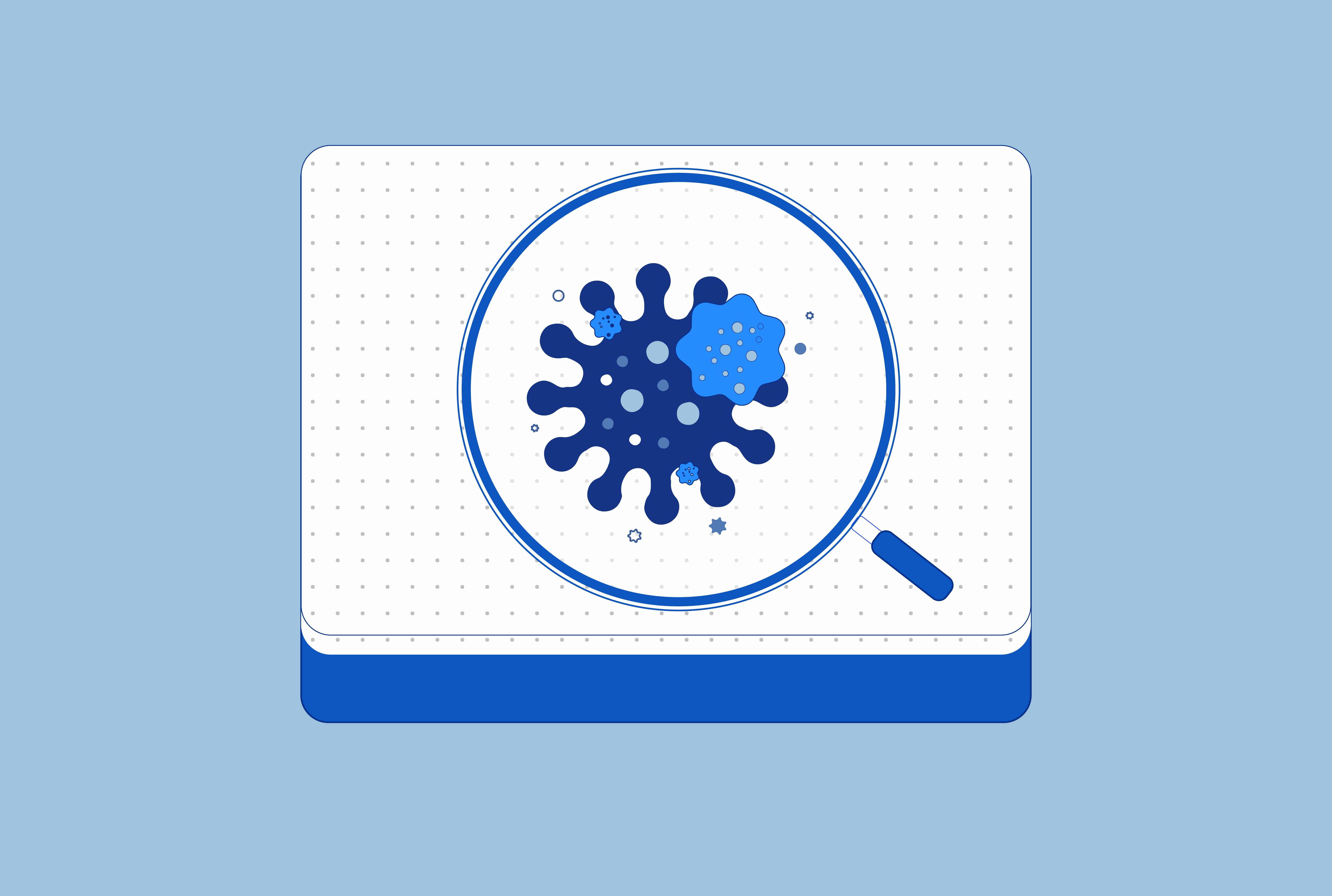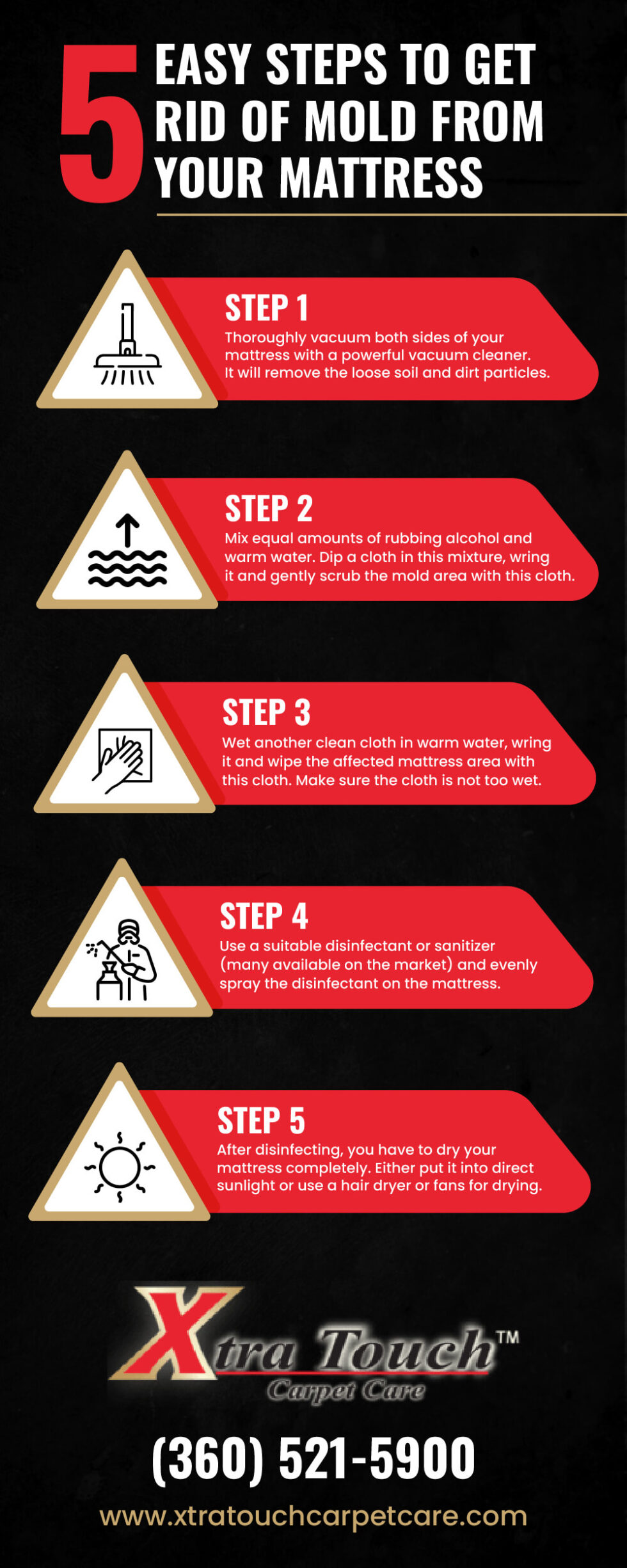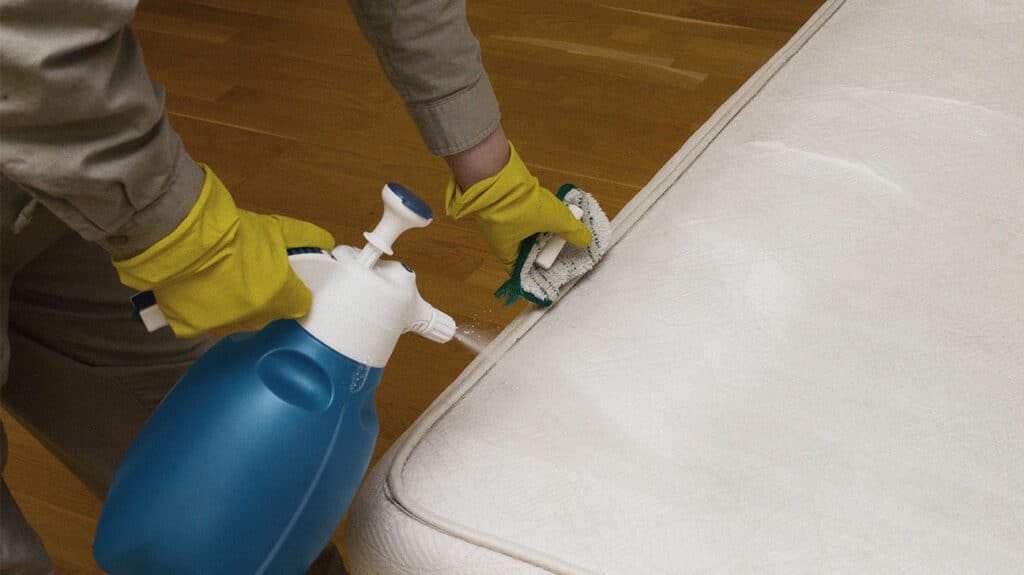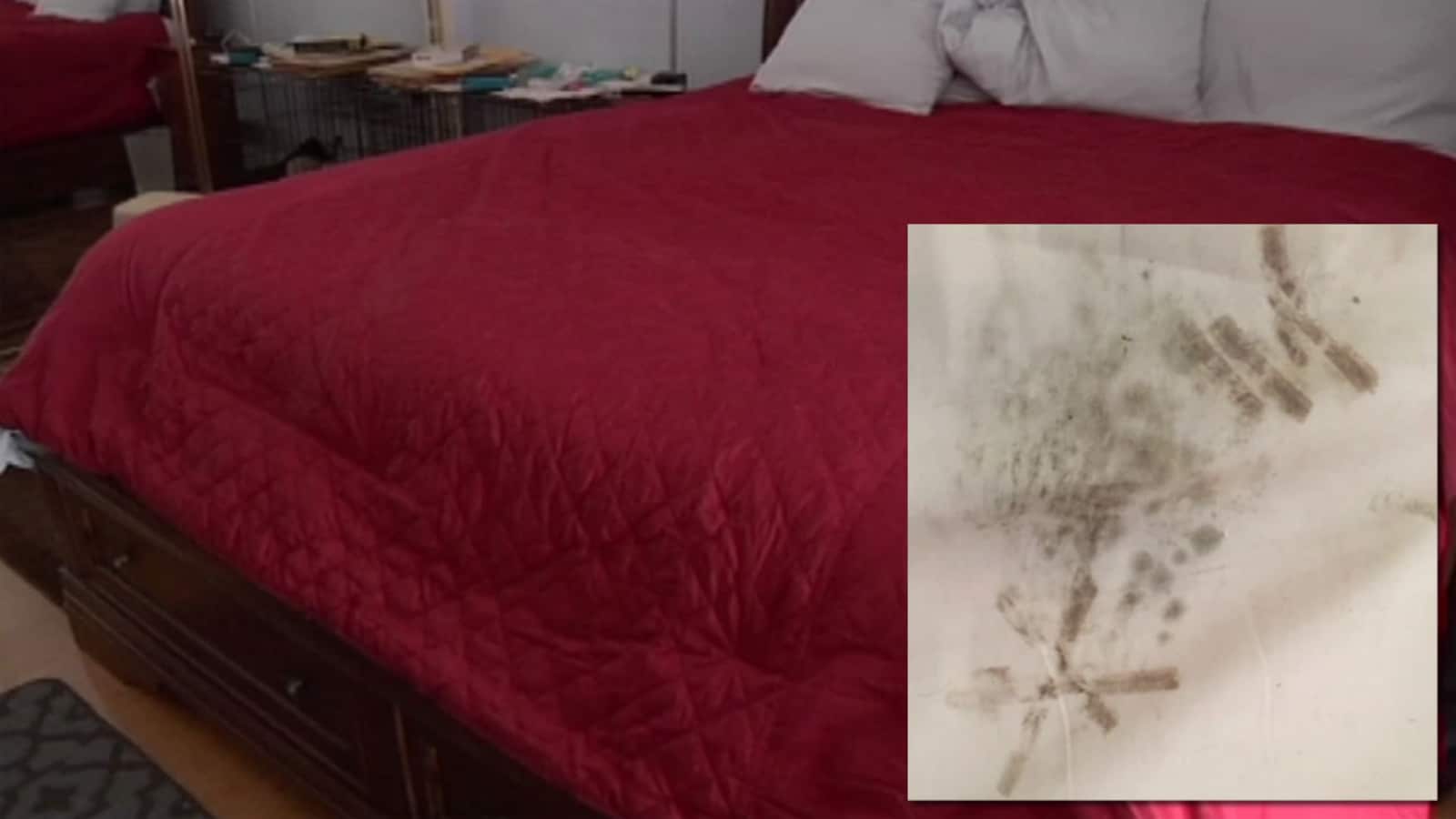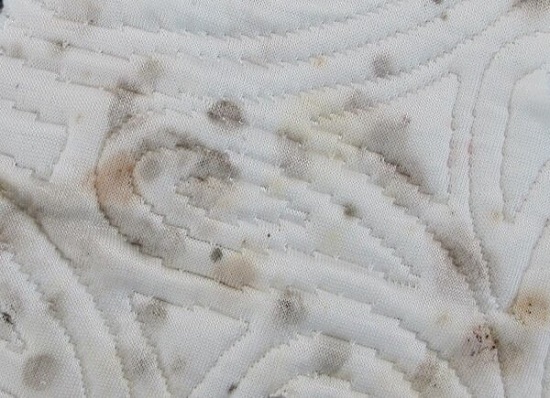Mold is a common problem that can affect any household item, including mattresses. Not only can it cause unpleasant odors, but it can also pose a health hazard. If you want to protect your mattress from mold, here are some tips to follow: 1. Keep Your Mattress Dry Moisture is a breeding ground for mold, so it's important to keep your mattress dry. This means avoiding spills and accidents, as well as regularly checking for any signs of moisture. If necessary, use a dehumidifier in your bedroom to reduce humidity levels. 2. Use a Mattress Protector A mattress protector is a thin, waterproof cover that goes over your mattress. It helps to keep your mattress clean and dry, preventing mold growth. Look for a protector that is breathable, so it doesn't trap moisture. 3. Air Out Your Mattress Every time you change your sheets, take the opportunity to air out your mattress. This means removing all bedding and leaving your mattress exposed to fresh air and sunlight for a few hours. This will help to get rid of any moisture and prevent mold from developing. 4. Don't Eat or Drink in Bed Spills and crumbs from food and drinks can easily make their way into your mattress and create a breeding ground for mold. It's best to avoid eating or drinking in bed to prevent any accidents from happening. 5. Rotate and Flip Your Mattress To prevent mold from forming in one specific spot, it's important to regularly rotate and flip your mattress. This will help to evenly distribute weight and moisture, reducing the chances of mold growth in a particular area.How to Prevent Mold on Mattresses
Despite your best efforts, mold can still develop on your mattress. Here are some signs to look out for and tips on how to get rid of it: 1. Musty Odor If you notice a musty smell coming from your mattress, it's a sign that mold may be present. This is particularly common in humid environments or if your mattress has been exposed to moisture. 2. Dark Spots Mold can appear as dark spots on your mattress. These spots may be green, black, or brown in color. If you see these spots, don't ignore them as they can spread quickly and cause damage to your mattress. 3. Allergic Reactions If you or your family members experience unexplained allergic reactions, such as sneezing, coughing, or itchy eyes, it could be a sign of mold on your mattress. Mold spores can trigger allergies and respiratory issues, so it's important to address the problem as soon as possible. 4. Use a Mold Cleaner If you do find mold on your mattress, don't panic. You can use a mold cleaner specifically designed for fabrics to get rid of it. Make sure to follow the instructions carefully and test the cleaner on a small, inconspicuous area first. 5. Dry the Mattress Thoroughly After cleaning, it's important to dry your mattress thoroughly before using it again. You can use a hairdryer on a low, cool setting or leave it in a well-ventilated room to air dry. Make sure it is completely dry before putting on any bedding.Signs of Mold on Your Mattress and How to Get Rid of It
The short answer is yes, your mattress can get mold. However, there are certain factors that can increase the likelihood of mold growth on your mattress: 1. Humidity High humidity levels can create the perfect environment for mold to grow. If you live in a humid climate, it's important to take extra precautions to prevent mold on your mattress. 2. Poor Ventilation If your bedroom doesn't have proper ventilation, it can trap moisture and increase the chances of mold growth on your mattress. Make sure to open windows and doors regularly to let fresh air in. 3. Spills and Accidents Spills and accidents can happen, and if not cleaned up properly, they can lead to mold growth on your mattress. It's important to address any spills or accidents immediately to prevent mold from developing. 4. Old Mattress An old mattress that has been used for many years can become a breeding ground for mold. This is because over time, mattresses can collect dead skin cells, sweat, and other bodily fluids, providing the perfect food source for mold to grow. 5. Lack of Cleaning Regularly cleaning and maintaining your mattress can help to prevent mold growth. If you neglect to clean your mattress, it can become a haven for mold and other allergens.Can Your Mattress Get Mold? Here's What You Need to Know
If you've discovered mold on your mattress, don't panic. Here's how you can safely and effectively clean it: 1. Remove All Bedding The first step is to remove all bedding and other items from your mattress. This will give you a clear view of the mold and make it easier to clean. 2. Vacuum the Mattress Using a vacuum cleaner with a high-efficiency particulate air (HEPA) filter, vacuum the entire surface of your mattress. This will help to remove any loose mold spores and other debris. 3. Use a Mold Cleaner Apply a mold cleaner to the affected area, following the instructions carefully. You can also use a mixture of equal parts water and white vinegar as a natural alternative. 4. Scrub Gently Using a soft-bristled brush, gently scrub the affected area in a circular motion. Be careful not to damage the fabric of your mattress. 5. Dry Thoroughly After cleaning, leave your mattress to air dry in a well-ventilated room. You can also use a fan or hairdryer on a low, cool setting to speed up the drying process.How to Clean a Moldy Mattress
Now that you know how to clean a moldy mattress, it's important to understand what causes mold to grow in the first place. Here are some common causes and how to prevent them: 1. Dampness As mentioned earlier, dampness and moisture are the main culprits for mold growth on mattresses. Address any sources of dampness in your bedroom, such as leaks or high humidity levels. 2. Lack of Airflow Poor ventilation can also contribute to mold growth on your mattress. Make sure to open windows and doors regularly to let fresh air in. You can also use a fan or air purifier to improve air circulation in your bedroom. 3. Dirty Bedding Dirty bedding can introduce mold spores and other bacteria to your mattress, providing the perfect environment for mold to grow. Make sure to wash your bedding regularly and use a mattress protector to keep your mattress clean. 4. Allergies If you or your family members suffer from allergies, it's important to take extra precautions to prevent mold on your mattress. Consider investing in hypoallergenic bedding and regularly cleaning and maintaining your mattress. 5. Old Mattress An old mattress that has been used for many years can become a breeding ground for mold. It's recommended to replace your mattress every 7-10 years to prevent mold and other allergens from building up.What Causes Mold on Mattresses and How to Get Rid of It
If you've discovered mold on your mattress, it's important to act quickly to prevent it from spreading and causing further damage. Here's how to safely remove mold from your mattress: 1. Wear Protective Gear Before cleaning, make sure to wear protective gear, such as gloves, a mask, and eye protection. This will help to prevent any exposure to mold spores. 2. Remove All Bedding Remove all bedding and other items from your mattress and wash them in hot water. This will help to kill any mold spores that may have transferred to your bedding. 3. Use a Mold Cleaner Apply a mold cleaner to the affected area, following the instructions carefully. You can also use a mixture of equal parts water and white vinegar as a natural alternative. 4. Let It Sit After applying the mold cleaner, let it sit for 10-15 minutes to give it time to penetrate the mold and kill it. 5. Scrub Gently Using a soft-bristled brush, gently scrub the affected area in a circular motion. Be careful not to damage the fabric of your mattress. 6. Dry Thoroughly After cleaning, leave your mattress to air dry in a well-ventilated room. You can also use a fan or hairdryer on a low, cool setting to speed up the drying process.How to Remove Mold from a Mattress
If you've discovered mold on your mattress, you may be wondering if it can be saved. The answer depends on the severity of the mold and how quickly you take action. In some cases, with proper cleaning and maintenance, you may be able to salvage your mattress. However, if the mold is extensive and has caused structural damage, it may be time to invest in a new mattress.Can a Mattress with Mold Be Saved?
Preventing and removing mold from your mattress requires regular cleaning and maintenance. Here are some tips to help keep your mattress mold-free: 1. Vacuum Regularly Use a vacuum cleaner with a HEPA filter to clean your mattress regularly. This will help to remove any dust, dead skin cells, and other debris that can attract mold. 2. Air Out Your Mattress Every time you change your sheets, take the opportunity to air out your mattress. This will help to get rid of any moisture and prevent mold from developing. 3. Use a Mattress Protector Invest in a quality mattress protector to keep your mattress clean and dry. Look for one that is breathable and waterproof to prevent moisture from seeping in. 4. Rotate and Flip Your Mattress Regularly rotate and flip your mattress to prevent mold from forming in one specific spot. This will also help to evenly distribute weight and moisture. 5. Address Spills and Accidents Immediately If you do experience spills or accidents, make sure to clean them up immediately to prevent mold from developing. Use a clean cloth and a mild detergent to remove any stains and dry the area thoroughly.How to Prevent and Remove Mold from Your Mattress
If you've discovered mold on your mattress, don't panic. Follow these steps to safely and effectively remove mold from your mattress: 1. Wear Protective Gear Before cleaning, make sure to wear protective gear, such as gloves, a mask, and eye protection. This will help to prevent any exposure to mold spores. 2. Remove All Bedding Remove all bedding and other items from your mattress and wash them in hot water. This will help to kill any mold spores that may have transferred to your bedding. 3. Use a Mold Cleaner Apply a mold cleaner to the affected area, following the instructions carefully. You can also use a mixture of equal parts water and white vinegar as a natural alternative. 4. Let It Sit After applying the mold cleaner, let it sit for 10-15 minutes to give it time to penetrate the mold and kill it. 5. Scrub Gently Using a soft-bristled brush, gently scrub the affected area in a circular motion. Be careful not to damage the fabric of your mattress. 6. Dry Thoroughly After cleaning, leave your mattress to air dry in a well-ventilated room. You can also use a fan or hairdryer on a low, cool setting to speed up the drying process.What to Do if Your Mattress Gets Moldy
The best way to keep your mattress mold-free is to regularly clean and maintain it. Here are some additional tips to help prevent mold from growing on your mattress: 1. Keep Your Bedroom Well-VentilatedHow to Keep Your Mattress Mold-Free
How to Prevent Mold Growth on Your Mattress

Understanding the Causes of Mold Growth on Mattresses
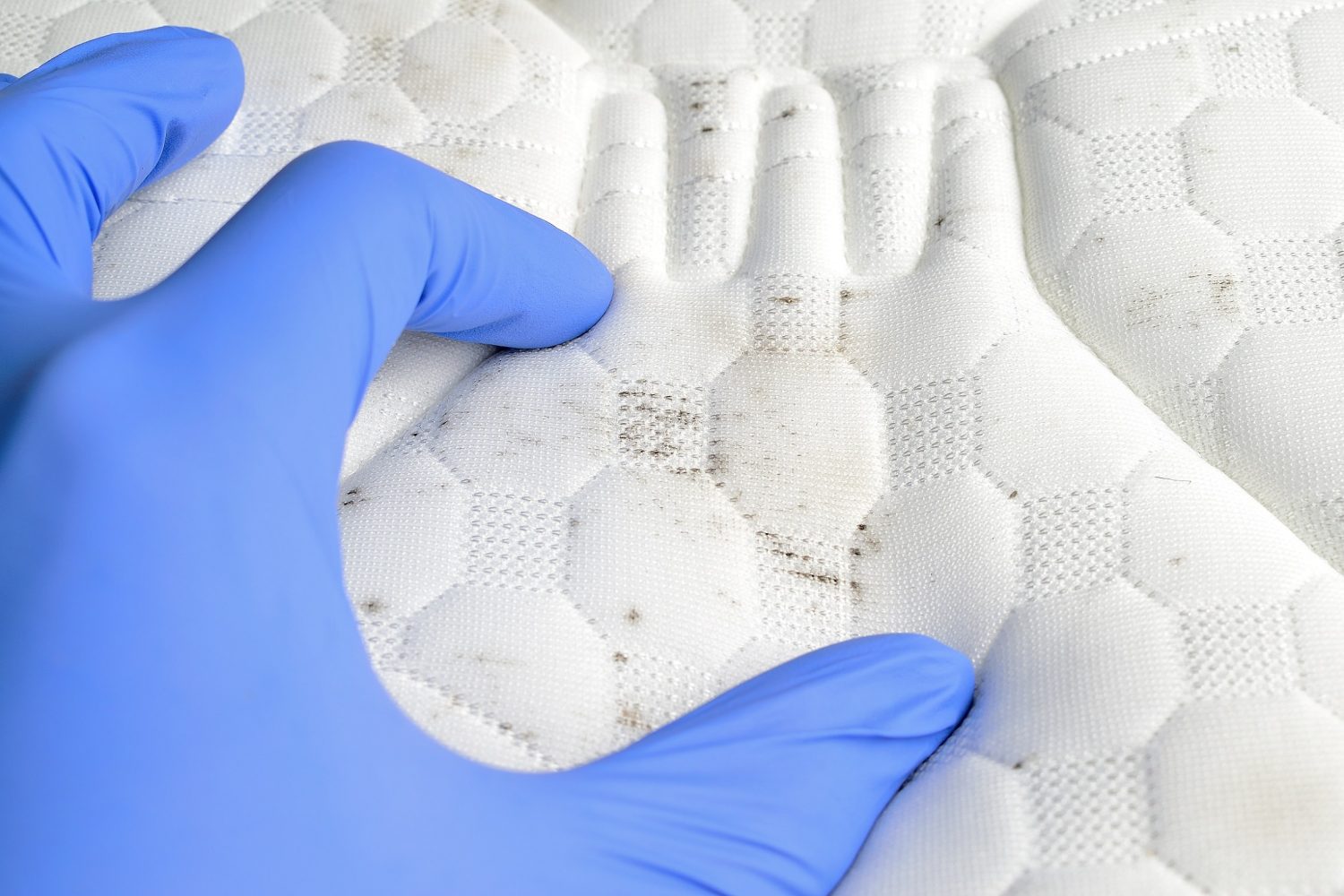 Mold growth on mattresses is a common concern for homeowners, and for good reason. Not only can it cause unpleasant odors, but it can also pose serious health risks. Mold thrives in warm and humid environments, making mattresses an ideal breeding ground. Additionally, mattresses are often made of materials that can retain moisture, such as cotton or memory foam. When these conditions are combined with lack of ventilation and sunlight, mold can quickly grow and spread on your mattress.
Mold growth on mattresses is a common concern for homeowners, and for good reason. Not only can it cause unpleasant odors, but it can also pose serious health risks. Mold thrives in warm and humid environments, making mattresses an ideal breeding ground. Additionally, mattresses are often made of materials that can retain moisture, such as cotton or memory foam. When these conditions are combined with lack of ventilation and sunlight, mold can quickly grow and spread on your mattress.
The Dangers of Mold on Your Mattress
 Mold spores can cause allergic reactions
and respiratory issues, especially for those with pre-existing conditions such as asthma or allergies. In some cases, mold exposure can also lead to skin irritation and infections. Furthermore, mold can produce mycotoxins which can have toxic effects on the body. These toxins can be released into the air, making it important to address mold growth on your mattress as soon as possible.
Mold spores can cause allergic reactions
and respiratory issues, especially for those with pre-existing conditions such as asthma or allergies. In some cases, mold exposure can also lead to skin irritation and infections. Furthermore, mold can produce mycotoxins which can have toxic effects on the body. These toxins can be released into the air, making it important to address mold growth on your mattress as soon as possible.
How to Prevent Mold Growth on Your Mattress
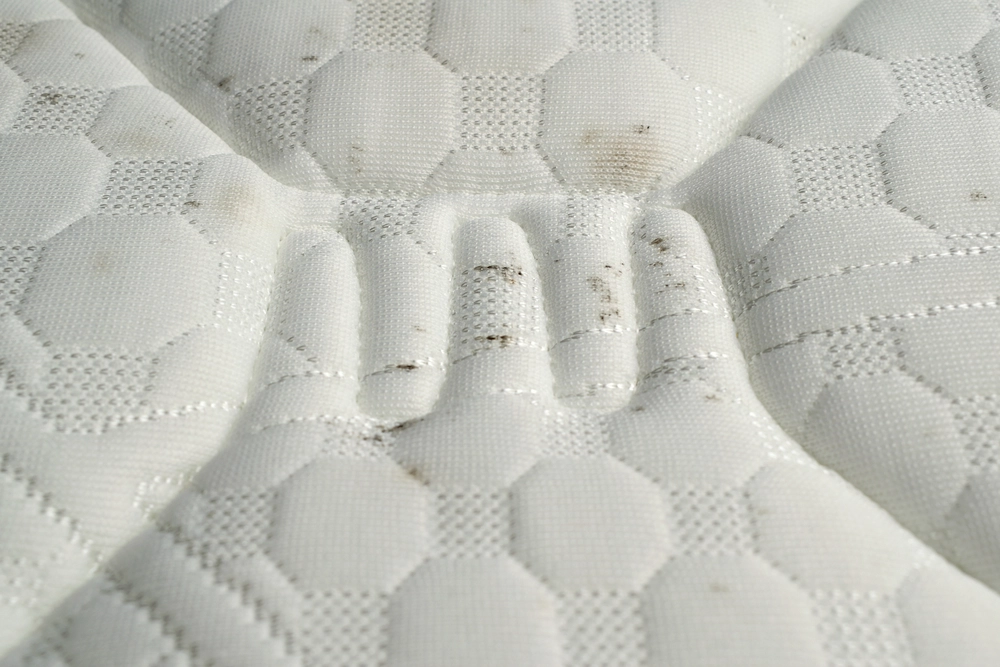 Maintaining proper hygiene
is key to preventing mold growth on your mattress. This includes regularly washing your bedding and using a mattress protector to prevent moisture from seeping into the mattress.
Airflow and sunlight
are also important in preventing mold growth. Make sure to open windows and use a fan to improve ventilation in your bedroom. If possible, try to expose your mattress to sunlight for a few hours every few weeks. This can help to kill any mold spores that may be present.
Investing in a quality mattress
can also help prevent mold growth. Look for mattresses made with materials that are resistant to moisture and mold, such as latex or bamboo. These materials are naturally antimicrobial and can inhibit the growth of mold and other bacteria.
Maintaining proper hygiene
is key to preventing mold growth on your mattress. This includes regularly washing your bedding and using a mattress protector to prevent moisture from seeping into the mattress.
Airflow and sunlight
are also important in preventing mold growth. Make sure to open windows and use a fan to improve ventilation in your bedroom. If possible, try to expose your mattress to sunlight for a few hours every few weeks. This can help to kill any mold spores that may be present.
Investing in a quality mattress
can also help prevent mold growth. Look for mattresses made with materials that are resistant to moisture and mold, such as latex or bamboo. These materials are naturally antimicrobial and can inhibit the growth of mold and other bacteria.
What to Do if Your Mattress Has Mold
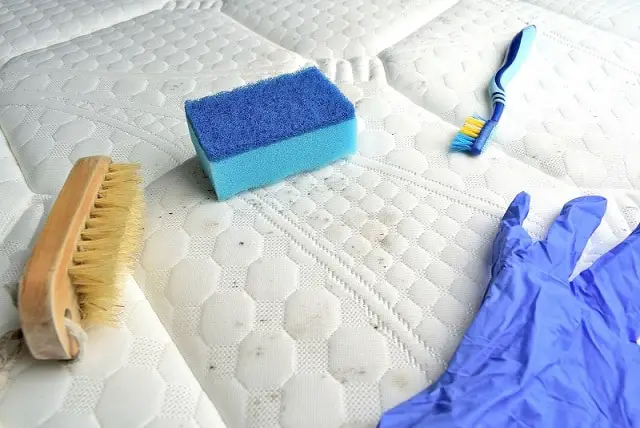 If you notice mold growing on your mattress, it's important to take immediate action.
Do not attempt to clean the mold yourself
, as this can spread the spores and potentially worsen the problem. Instead, seek the help of a professional cleaning service that specializes in mold removal. They will have the necessary equipment and expertise to safely and effectively remove the mold from your mattress.
In conclusion, mold growth on mattresses is a common issue that can have serious consequences. However, by understanding the causes and taking preventative measures, you can keep your mattress mold-free and ensure a safe and healthy sleeping environment. Remember to regularly clean and maintain your mattress, invest in quality materials, and seek professional help if mold does occur. With these steps, you can rest easy knowing your mattress is mold-free.
If you notice mold growing on your mattress, it's important to take immediate action.
Do not attempt to clean the mold yourself
, as this can spread the spores and potentially worsen the problem. Instead, seek the help of a professional cleaning service that specializes in mold removal. They will have the necessary equipment and expertise to safely and effectively remove the mold from your mattress.
In conclusion, mold growth on mattresses is a common issue that can have serious consequences. However, by understanding the causes and taking preventative measures, you can keep your mattress mold-free and ensure a safe and healthy sleeping environment. Remember to regularly clean and maintain your mattress, invest in quality materials, and seek professional help if mold does occur. With these steps, you can rest easy knowing your mattress is mold-free.
